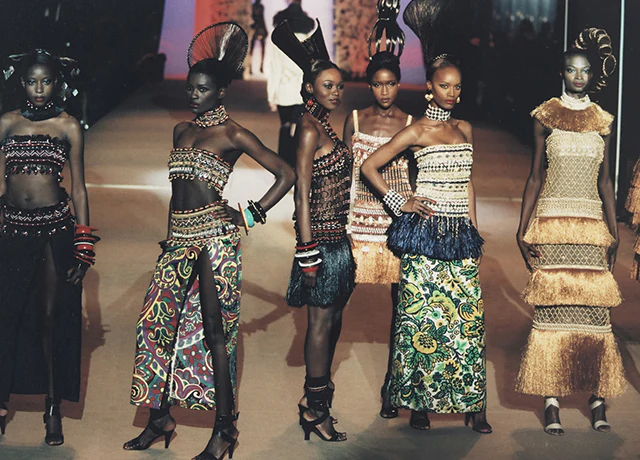African clothing has a rich and diverse history spanning many regions and cultures. From the intricate textiles of West Africa to the colorful fabrics of East Africa, African clothing is an essential part of the continent's cultural heritage. In this blog post, we will explore the history of African clothing and the significance of its various styles.
Origins of African Clothing
The history of African clothing can be traced back thousands of years. The earliest evidence of textile production in Africa dates back to the 5th millennium BC, where
evidence of spun and woven fabrics was found in the Nile Valley. By the time of the ancient Egyptians, around 3,000 BC, linen was a standard textile, and garments were often made from white linen to reflect the sun's heat.
As trade routes opened throughout Africa, fabrics and clothing styles began to spread between regions. The Arab slave trade brought new textiles, such as silk and cotton, to East Africa, while the trans-Saharan trade brought West African fabrics like Kente and Adinkra cloth to North Africa and the Middle East.
Styles of African Clothing
African clothing is diverse and varied, with different regions and cultures having distinct styles. In West Africa, traditional textiles like Kente, Adinkra, and Bogolanfini (mud cloth) are woven or printed in intricate patterns and used to make loose-fitting garments like robes and dashikis. In East Africa, Kanga and Kitenge fabrics are often used to make brightly colored dresses and skirts. In many parts of Africa, clothing is also used to communicate social status and identity. For example, the brightly colored clothing worn by the Maasai people of Kenya and Tanzania symbolizes their cultural identity and a way of communicating their tribe affiliation. Similarly, the elaborate beading and jewelry worn by the Zulu people of South Africa are a sign of their social status and wealth.
Modern African Fashion
In recent years, African fashion has gained global recognition, with designers like Stella McCartney and Louis Vuitton incorporating African textiles and prints into their collections.
African designers like Ozwald Boateng, Duro Olowu, and Maki Oh are also making waves in the fashion industry, showcasing the diversity and creativity of African fashion.
African clothing has also become more accessible to consumers worldwide, with online marketplaces like Etsy and Afrocentric Fashion making it easier to find and purchase African-inspired clothing and accessories.
The history of African clothing is rich and diverse, spanning many different regions and cultures. From the earliest evidence of textile production in the Nile Valley to the vibrant modern African fashion scene, African clothing has played an essential role in shaping the continent's cultural heritage.






